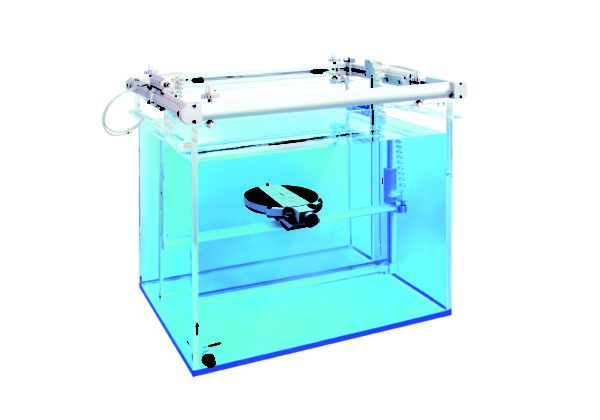- Clinical
- Physics
- QA
- Dosimetry
- Proton QA & Dosimetry
- Software
- ART-Plan by TheraPanacea
- COMPASS Patient Dose QA
- ImSimQA™
- myQA® Software Physics QA Platform
- myQA® iON for conventional radiotherapy
- myQA® iON for Proton Therapy
- ProSoma – Virtual Simulation
- ProSoma Core – MC plan, check, and logfile analysis
- RadCalc QA Software
- RIT Family of Products
- SagiPlan® HDR & Focal Therapy Planning
- MRI Physics Solutions
- SGRT
- Medical Imaging
- Exterior and Interior Design
- Manufactured by
- Support & Finance
- News
- About
- Contact
Lynx PT Detector

Highest accuracy and speed for daily machine QA and commissioning

Overview
The Lynx PT offers the finest resolution for spot characterisation and Machine QA
Daily machine parameter verification is used from commissioning to machine QA, without compromise between high accuracy and speed
- Optimised for pencil beam scanning
- High-resolution scintillator-based sensor
- The active surface of 30x30 cm² and effective resolution of 0.5 mm
- Single shot and movie mode measurements
- Compatible with myQA
- Dicom RT export supported
Technology
The Lynx detector consists of a box composed by a scintillating screen of gadolinium-based plastic material which converts the energy lost by ionizing radiation into photons. This light is reflected in photodiodes of a CCD camera outside the irradiation field. To avoid the saturation of the camera, iris aperture can be changed, as well as the gain. The detector signal from the CCD camera is digitalized at a 10-bit depth.
The Lynx detector is easy to set up. It can be operated on the treatment couch. Data is transferred to a PC via Ethernet (the previous version use Firewire).
Lynx is supported by the following software solutions:
- Lynx2D
- myQA Lynx plug-in
Corrections
The Lynx detector is characterized by IBA Dosimetry Lab and Fimel. Different corrections have to be applied to the response of the Lynx detector:
- To equalize the response of the sensor’s pixels, a uniformity correction (*.mc file) is determined in a reference beam to guarantee an image uniformity within 2%.
- To correct for the distortions due to slight misalignment between the mirror and the camera, a geometrical correction (*.geo file) is determined.
Both corrections are determined using a full iris aperture (i.e. 100%). If the detector is not used with a full iris aperture, a correction must be applied. This iris aperture correction (*.dia file) is determined between a full iris aperture (100%) and an iris aperture of 40%.
Background correction
Besides these corrections, before each detector irradiation session, a background correction is automatically measured to remove both thermal and electronic noise of the camera from the following acquisitions.
Technical specs
- Scintillation screen thickness: 0.4 mm
- Energy range: 60Co at 25 MV in photons /4 to 25 MeV in electrons/ 230 MeV Protons
- Active surface area: 300 x 300 mm² (600 x 600 pixels)
- Pixel size: 4.65 x 4.65 um²
- Effective spacial resolution: 0.5 mm
- Geometric distortion: ≤ 0.3 mm for the central zone of ≤ 280 x 280 mm²; ≤ 0.8 mm elsewhere
- Image acquisition: CCD camera
- Video camera: 1024 x 1024, 12-bit resolution
- Sampling time: 7 images / seconds
- Dose linearity within +/- 1.5%
- Spot sigma: Variation < 100 um
Abstract
Range resolution and reproducibility of a dedicated phantom for proton PBS daily quality assurance - read online here



OSL finance now available for this product
Found what you're looking for or need to discuss your requirements?
Call us today on +44 (0)1743 462694 or email us here
Access your product documents and software downloads via OSL Portal

